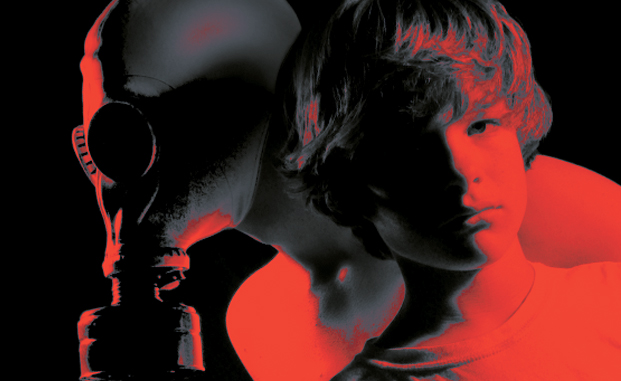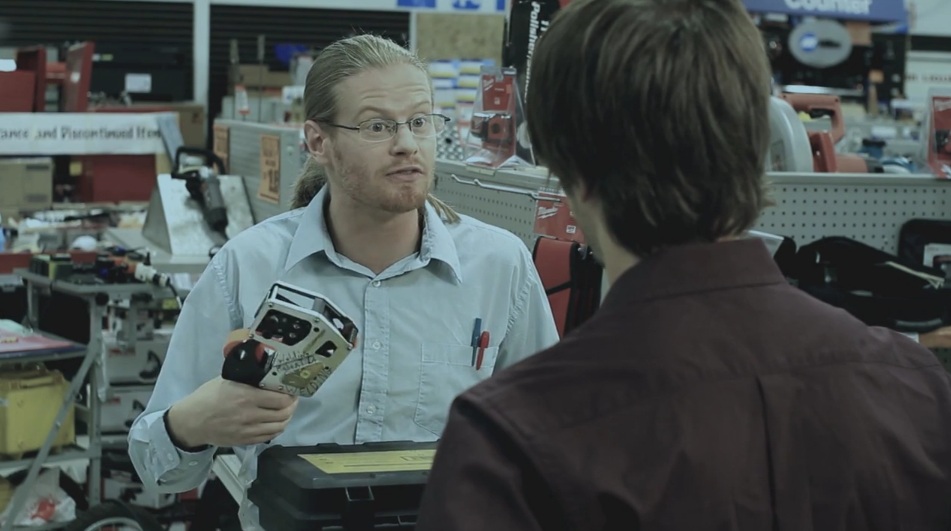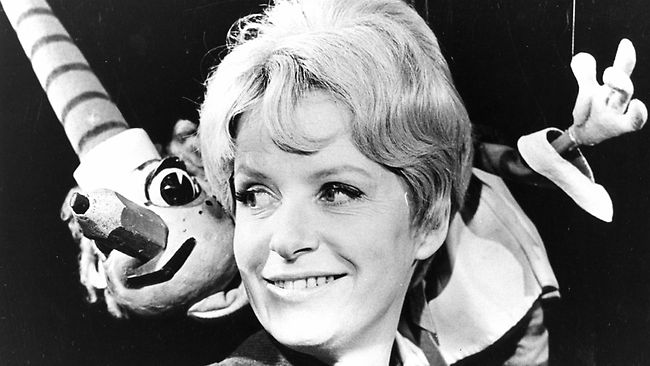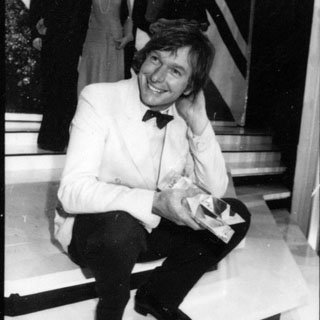Welcome to the first ever SCREEN-SPACE Academy Awards Blog. As the 85th ceremony unfolds under the guidance of director Don Mischer and host Seth MacFarlane at Hollywood's Dolby Theatre, SCREEN-SPACE will follow all the winners, presenters and performers attending the film industry's biggest night of the year. Bookmark this page then watch our Twitter feed for Oscar updates as they happen.
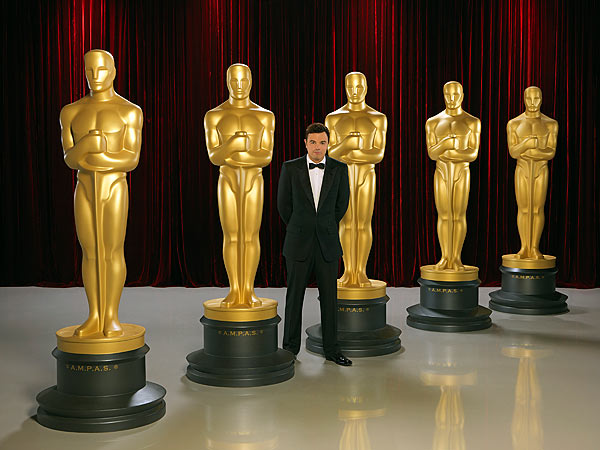
LIVE FROM THE DOLBY THEATRE: LOS ANGELES 5.30pm PT.
Welcome everyone to the 2013 Oscars!
Seth McFarlane opens with a "Make Tommy Lee Jones laugh" gag.
The traditional monologue so far very 'industry-centric' - profit/loss accounting joke, where's Jean Dujardin?. Usual nominee jokes, enlivened by Rhinna/Chris Brown shot, 'n-word' Django reference. Crowd not thrilled.
Nerds rejoice when William Shatner, in a pre-recorded piece, looks back at press coverage of MacFarlane's first gig - from the future. Cute idea; meagre pay-off. Leads to tacky 'Boobs' song, outlining films with topless actress; will play well with the 'Ted' audience.
Charlize Theron and Channing Tatum class things up with old-school dance number; follow-up skit, 'Flight with sock puppets', funnier than it sounds. JGL and Harry Potter join MacFarlane for half-hearted soft-shoe number.
Sally Field proves a good sport, committing to pre-recorded 'Flying Nun' SNL-lite bit. Opening starting to feel long...
Lots of irony in final dance number, though understated and fun.
5:47pm - Octavia Spencer to announce Best Supporting Actor.
WINNER - Christolph Waltz, Django Unchained.
Paul Rudd and Melissa McCarthy stumble through some good-on-paper schtick about animated voice work. Thought she'd offer up more... Nominees for Best Short Film.
WINNER - Paperman, John Kahrs
Segues quickly into Best Animated Feature Film nominess.
WINNER - Brave, Mark Andrews and Brenda Chapman.
MacFarlane, after lame George Clooney gag, introduces The Avengers stars Robert Downey Jr, Jeremy Renner, Samuel Jackson, Chris Evans and Mark Rufalo to announce Cinematography award.
WINNER - Claudio Miranda, Life of Pi
6.10pm - Did these five rehearse at all? They look like they only just met, let alone star together in a blockbuster. Special FX Oscar goes to...
WINNER - Life of Pi, Bill Westenhofer, Guillaume Rocheron, Erik-Jan De Boer and Donald R. Elliott.
Fun idea to play off chatty acceptance speech with Jaws theme backfires when speech turns serious, imploring industry to embrace floundering FX houses such as Rhythm and Hues.
Channing Tatum and Jennifer Aniston, after awkward body-waxing routine, work through nominees for Costume Design.
WINNER - Jacqueline Durran, Anna Karenina.
Good speech is a quick speech. Nominees for hair and make-up...
WINNER - Lisa Westcott and Julie Dartnell, Les Miserables.
6.20pm - Halle Berry introduces video tribute to 50 years of Bond. Grand entrance of Dame Shirley Bassey, belting out the iconic Goldfinger song. Show takes on old showbiz feel for first time, crowd responds. Appears the rumoured Bond reunion not a goer.
Some back-slapping for Oscars behind the scene gurus, then Django's married couple, Jamie Foxx and Kerry Washington. Awkward banter (worse than usual award show presenter inanity, it must be said) leads to best live-action short film nominees.
WINNER - Curfew, Shawn Christensen.
Best Documentary Short nominees...
WINNER - Inocente, Sean Fine and Andrea Nix Fine.
Emotional quartet of winners, including films subject, get audience sympathy and rousing response.
Liam Neeson presents Best Film nominee clips for Argo, Lincoln and Zero Dark Thirty. MacFarlane dies with yet another 'Lincoln in a theatre' joke, but gets a murmur of giggles for Kardashian face-hair gag.
Ben Affleck introduces Best Documentary Feature contenders.
WINNER - Searching For Sugarman, Mallik Bendjelloul and Simon Chinn.
Jennifer Garner and Jessica Chastain announce Best Foreign Film nominess; their presentation suitably respectful and refreshingly professional.
WINNER - Amour (Austria), Michael Haneke.
6.50pm - Acceptance speech refined, as expected. First glimpse of film's star, Emmanuelle Riva.
MacFarlane then chickens out, refusing to have a shot at well-publicised troubles faced by the next presenter, John Travolta. Star of Grease and Saturday Night Fever introduces vast musical number celebrating the genres impact on film. First up, Catherine Zeta-Jones recreating her Chicago showstopper, All That Jazz; next, Jennifer Hudson belts out her Dreamgirls hit, And I am Telling You; finally, the principal cast of Les Miserables (including Russell Crowe) stages One Day More. Highpoint of proceedings so far.
Star Trek's Chris Pine and Zoe Saldana recount their hosting gig at recent Scientific and Technical Oscars ceremony.
Mark Wahlberg and his Ted co-star, Ted, work the crowd with Hollywood sex-orgy routine ("It's at Jack Nicholson's house") before launching into Best Sound Mixing nominees.
WINNER - Les Miserables, Andy Nelson, Mark Paterson and Simon Hayes.
'Jews own Hollywood' schtick before Sound Editing nominees...which lead to VERY big surprise. A tie!
WINNERS - Paul NJ Ottoson for Zero Dark Thirty and Per Hallberg and Karen Baker Landers for Skyfall.
MacFarlane follows up Ted's Jew joke with Nazi/The Sound of Music visual gag (he's tanking on a Letterman level). Christopher Plummer honours Best Supporting Actress nominees with heartfelt, erudite introduction.
WINNER - Anne Hathaway, Les Miserables.
Academy president Hop Koch (?) pre-sells soon-to-open AMPAS Museum and introduces 'trophy interns'. This is new. Sandra Bullock runs through Best Film Editing nominess...
WINNER - William Goldenberg, Argo.
Ahead of what is suring as an Oscar winner, Jennifer Lawrence introduces Adele and an extravagantly-staged rendition of her Skyfall theme. For not the first time, some audio problems rob the performer and the performance.
Nicole Kidman runs through last of the Best Film nominees, Silver Linings Playback, Django Unchained and Amour. Daniel Radcliffe and a hobbly Kristen Stewart speed through the Best Production Design nominees...
WINNER - Lincoln, Production Design: Rick Carter; Set Decoration: Jim Erickson
Salma Hayek introduces the winners of the Governor's Awards, announced previously at a star-studded industry event - Hal Needham, George Stevens Jr., DA Pennebaker and Jean Herscholdt Award honouree, Jeffery Katzenberg.
8.00pm - George Clooney introduces the always popular, very moving In Memoriam sequence. The final image, of the late Marvin Hamlisch, is followed by Brabara Streisand, recalling their 'Memories' with a rendition of their classic song.
The cast of Chicago reunited for Best Musical Score award announcement.
WINNER - Life of Pi, Mychael Danna.
Rolling straight into Best Song category, the Chicago quartet introduce the remaining nominees from Les Miserables, Chasing Ice, Life of Pi and Ted (performed live by Norah Jones).
WINNER - Skyfall, Music and Lyrics by Adele Adkins and Paul Epworth.
Dustin Hoffman, towered over by co-presenter Charlize Theron, review the origins of the Best Adapted Screenplay nominees.
WINNER - Argo, Chris Terrio.
Best Original Screenplay nominees...
WINNER - Django Unchained, Quentin Tarantino.
8.25PM - Tarantino shouts down orchestra to have his say on strength of writing amongst all 2013 nominees.
Jane Fonda and Michael Douglas, now apparently symbolic of the 'old Hollywood of the 80s' (jeez...), introduce Best Director nominees.
WINNER - Life of Pi, Ang Lee.
The first truly surprising win of the night, reflected upon the faces of everyone at the Dolby Theatre. 'Thank you to the movie gods!," Lee exclaims. "Namaste."
Jean Dujardin gets all French on everyone, charming the crowd in advance of the Best Actress nominees. Little Q gets a big laugh with her muscle arms, before...
WINNER - Jennifer Lawrence, Silver Linings Playbook.
Meryl Streep takes the stage (with a minor wardrobe malfunction) to praise the Best Actor nominees.
WINNER - Daniel Day Lewis, Lincoln.
8.48pm - Lewis gets the biggest laugh of the night, suggesting he swapped with Meryl Streep for the Lincoln role when he was cast as Margaret Thatcher. MacFarlane introduces Jack Nicholson for the nights final award, the Best Picture, who surprises all by throwing to the White House, where Michelle Obama delivers an 'artists are crucial to national health' speech. A first time event that represents a major coup for the Academy. She announces...
WINNER - Argo; Grant Heslov, Ben Affleck and George Clooney, Producers.
Lot of genuine emotion in Affleck's speech. MacFarlane insinuates there's more to come, which would break with tradition; no doubt, everyone just wants to go home, but MacFarlane is not going to let this audience go without further showmanship, for want of a better term. (Australian audiences will never know - local broadcaster leaves feed before we can find out.)
Thanks for joining SCREEN-SPACE for our Oscars 2013 coverage.

 Spielberg, along with a panel that included Nicole Kidman and Ang Lee (pictured, right), was effusive in their praise for the Tunisian-born director’s drama, stating at the post-announcement press conference that the film was, “A great love story that made all of us feel privileged to be a fly on the wall, to see this story of deep love and deep heartbreak evolve from the beginning. The director didn’t put any constraints on the narrative. He let the scenes play in real life, and we were absolutely spellbound.”
Spielberg, along with a panel that included Nicole Kidman and Ang Lee (pictured, right), was effusive in their praise for the Tunisian-born director’s drama, stating at the post-announcement press conference that the film was, “A great love story that made all of us feel privileged to be a fly on the wall, to see this story of deep love and deep heartbreak evolve from the beginning. The director didn’t put any constraints on the narrative. He let the scenes play in real life, and we were absolutely spellbound.” Simon Foster
Simon Foster